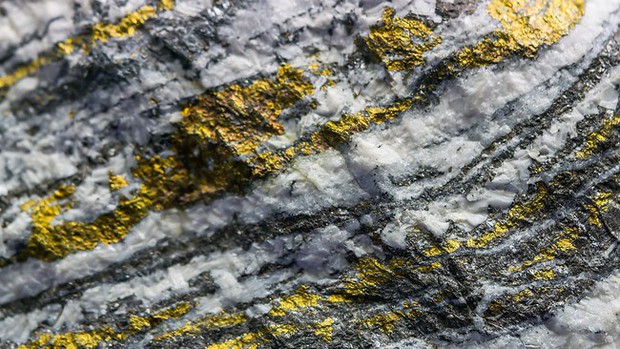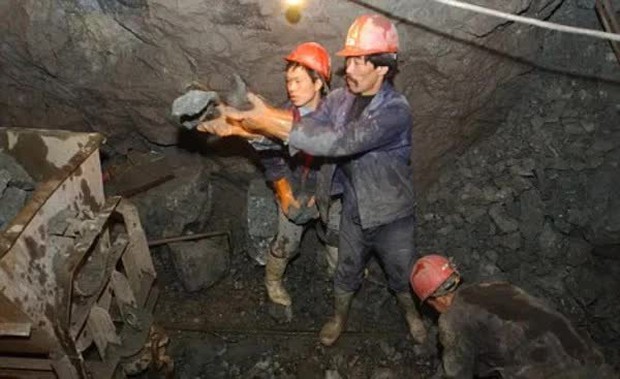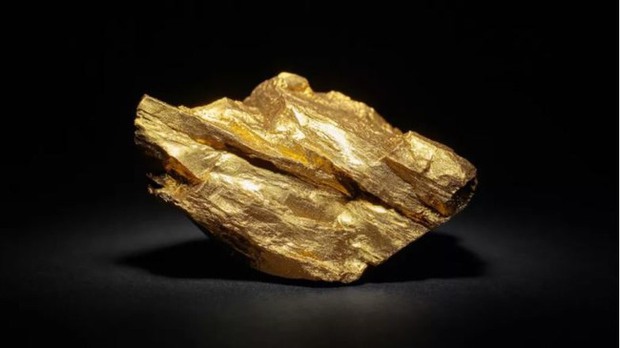This treasure is a gold mine with reserves of nearly 50 tons, worth 3 billion USD.
Accordingly, in mid-March, this gold mine was found in the countryside of Nhu Son city (Shandong province). This information immediately attracted the attention of many people.

According to the Shandong Provincial Administration of Geology and Mineral Resources, the nearly 50-ton gold mine covers a large area, and the ores are easy to mine and carve.
“Explorers have drilled more than 250 holes up to 1,400 meters deep to find the gold mine,” said Zhou Mingling, deputy head of the 6th Geological Division at the Shandong Provincial Administration of Geology and Mineral Resources . .
According to experts, Shandong province is rich in gold resources. Gold production here is larger than in any other region across China over the past four decades.
Where does gold come from?

Gold is a rare and very valuable metal. Photo: VCG
Gold is considered a symbol of wealth. This metal is used in many fields. In fact, about 78% of the world’s annual gold supply is used for jewelry. Meanwhile, the remaining gold is used in the field of electronics and applications in dentistry and medicine.
According to experts, unlike many other valuable materials, such as daonds, gold cannot be created by artificial means. This is also the reason why gold is so valuable.
In fact, scientists have also found several ways to make gold, but they are not cost-effective to put into practice. As a result, nearly all of the gold we see on the market comes from mining or recycling.
So, where does the natural gold in the mines actually come from? Although there is no exact answer from experts, there are many theories. In it, a popular theory is put forward that gold originated from the collision between two neutron stars, The collision released astronomical energy enough to create the rare metal, gold.
How is gold distributed on Earth?

Finding and mining in gold mines is also not easy. Photo: George Jaworsky
According to experts, not all places on Earth have the same gold reserves. For example, one town might contain almost no gold, while a neighboring village might have huge gold reserves.
According to Professor Zhu Yongfeng at the Institute of Geochemistry, Peking University, more than 100 theories have been put forward to explain the distribution of gold over the past three decades.
“Most of the theories are short-lived. Some of them have been proven completely wrong,” said Mr. Yongfeng.
The gold rush has spread from place to place over the past few decades, the professor added. However, there are not many real useful theories for finding gold.
One of the few possible theories is that gold deposits can often be found near earthquake belts, as volcanic activity and magma can cause this rare metal to be concentrated in a few areas. specifically.
The land has about 99% of untapped gold left
According to experts, Shandong province (China) is rich in gold resources. Shandong lies along the path of the Pacific Ring of Fire, the site of the largest series of earthquakes in the world.
However, the above geographical features are not enough to explain the large gold reserves of Shandong province, especially in the Jiaodong peninsula, because the “ring of fire” stretches along the entire belt of Taiping. Positive.

Shandong province has nearly 99% of its untapped gold reserves. Photo: Getty Images
Furthermore, the Jiaodong peninsula in Shandong is characterized by a complex geological structure, including faults and folds. This creates favorable conditions for the formation of gold mines. For millions of years, the region has experienced intense tectonic activity, experts say, and pushed gold mines deep underground closer to the surface.
In fact, gold mining in Jiaodong has also existed for more than 2,000 years. Local people have proceeded to develop more advanced mining techniques.
According to data released by the local government at the end of 2020, Jiaodong has become the third largest gold mining site in the world.
By 2021, Shandong province will contain more than 4,500 tons of the world’s 63,000 tons of untapped gold. Thus, the recently discovered 50-ton gold mine represents just over 1% of the province’s total potential gold reserves. Especially, with the continuous development of modern technology, experts are likely to find more gold in Shandong province in the future.








